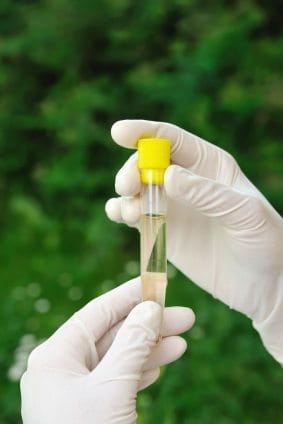University Water Contamination – SF Bay Area
University Water Contamination Testimonial:
“HBS was instrumental to our investigation of a leak and a possible cross contamination”
–Campus Facilities Manager
University Water Contamination – Summary
San Francisco
HBS was contacted to investigate a reported leak in the radiant heating system and possible cross contamination between the radiant heating system water and the drinking water supply in a 100,000+ SF multi-story building for a San Francisco Bay Area University.
University Water Assessment – Process
HBS conducted a visual inspection of the radiant heating system, including the areas of reported leakage. Leakage occurred at pressure relief and sampling valves in the ceiling of the first floor. Schematic drawings of the radiant heating system and fresh drinking water supply system were analyzed.
Possible points of cross contamination were hypothesized and investigated. Analysis of MSDS was conducted to determine which specific treatment chemicals were added to the radiant heating system. Sampling of drinking water was conducted in several locations.
University Case Study – Highlights
The entire radiant heating system was inspected and all leaks repaired. The radiant heating water system is a closed system and the water in this system was treated with chemicals to prevent corrosion and microbial growth. The only point of possible cross contamination in the system was determined to be the refill valve; where fresh water could be added to the radiant heating system. While cross contamination was possible at this point it was determined that all check valves and back-flow preventers were in place and operating properly.
Three chemicals were identified that were used in the radiant heating system treatment that would not (and should not) be found in drinking water. A water sample was taken from the radiant heating system water to determine levels of the three “Indicator” chemicals. 12 water samples were taken from all drinking fountains and bathroom faucets within 25 feet of the reported leaks and fresh-water fill point. A water sample from the building next door was also taken to be used as a control for drinking water.
All drinking water samples were similar to the control sample and typical for City supplied treated drinking water. No detectible amounts of the three “Indicator” chemicals were detected in any sample.
University Water Contamination – Conclusion
Visual inspection and system analysis did reveal leaks in the radiant heating water system in this building, which were repaired. However, only a single point of possible cross contamination into the fresh water supply was identified. Systems to prevent back-flow were found to be in proper working order and well maintained. Water sampling did not detect any chemicals from the radiant heating system in the building drink water. It was determined that there was a very low (almost zero) probability of any cross contamination of the water systems and no contamination of the fresh water drinking supply was indicated.
